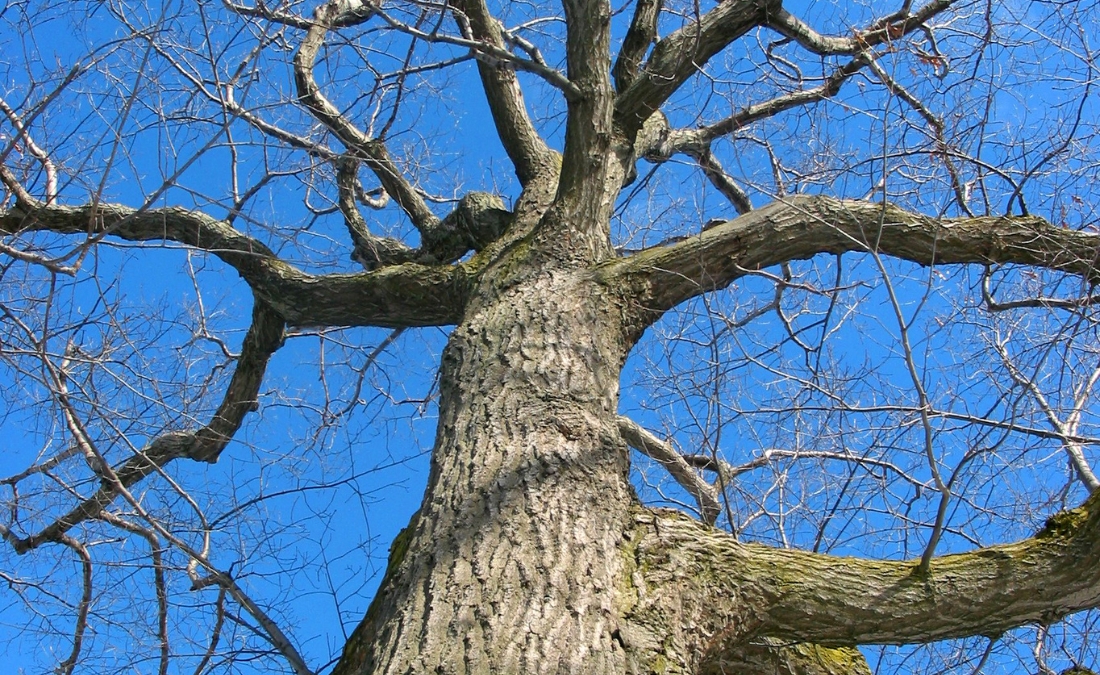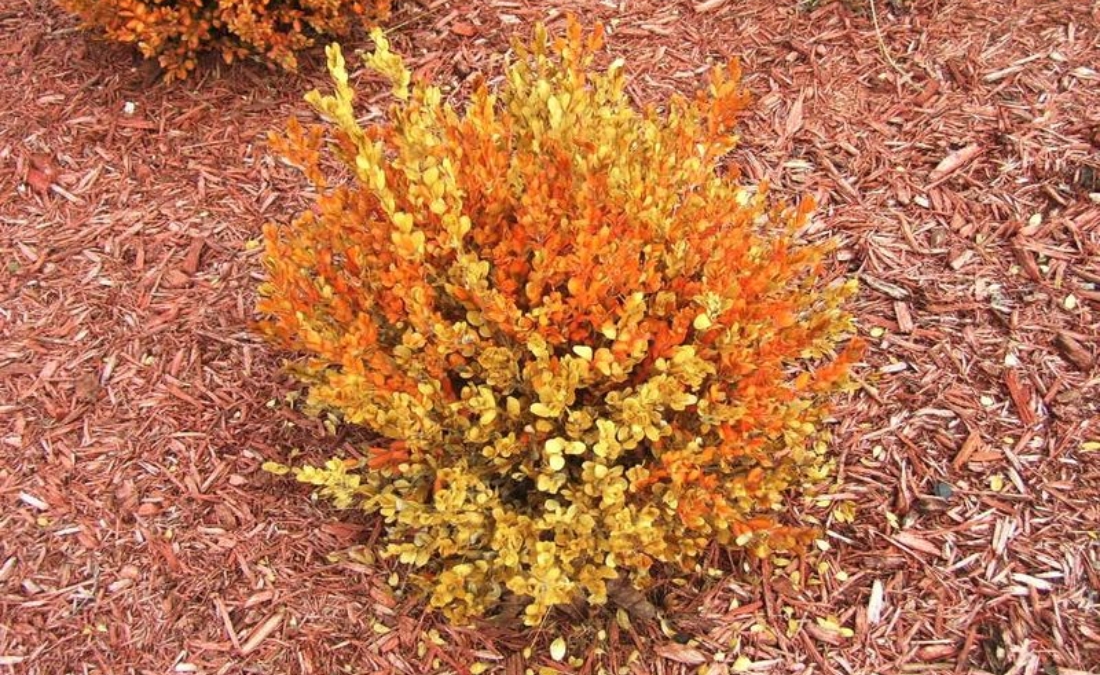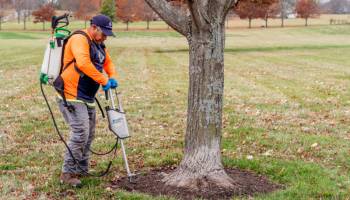Horned Oak Gall: What Those Spiky Growths on Your Oak Tree Really Mean

Spiky growths on your oak tree? It could be horned oak gall! Learn what causes it, how to manage it, and when to take action to support your tree.
Have you noticed strange, spiky growths on the branches of your oak trees? These swollen, woody lumps covered in horn-like projections look like they are straight out of a sci-fi movie. However, the odd-looking formations are actually called horned oak galls, and they happen to be the result of tiny wasps using your tree as a nursery.
Here’s what you need to know about horned oak galls and what they mean for your tree’s long-term health.
Key Takeaways
- Horned oak galls are abnormal growths caused by tiny gall wasps that primarily affect pin oaks in the Midwest, creating unsightly spiked, golf ball-sized growths on branches.
- While not fatal, these galls develop slowly over 2–3 years and can spread to nearby trees as each new generation of wasps emerges.
- Preventing horned oak galls starts with keeping trees healthy and stress-free through proper fertilization, adequate watering during drought, mulching, and avoiding tree injuries.
- Treatment typically involves a Certified Arborist pruning affected branches, as mild infestations rarely require chemical controls.
What is Horned Oak Gall
Horned oak gall is a type of abnormal growth that forms when a tiny wasp lays its eggs inside the twigs of certain oak trees. The tree reacts by building a hard, woody structure – the gall – around the insect larvae. Over time, these galls grow larger and more noticeable, eventually sprouting horn-like projections as the next generation of wasps prepares to emerge.
It’s not a disease, and it won’t likely kill your oak by itself. But that doesn’t mean it’s harmless. Heavy infestations can weaken limbs, cause dieback, and leave your tree stressed, especially if it’s already dealing with drought, compaction, or poor pruning in the past.
It’s the kind of problem that creeps up slowly, and by the time those galls are big enough to notice, your tree’s already been under stress for a while.
PRO TIP: Horned oak gall is just one of many problems that affect oak trees throughout the Midwest and Great Plains. If you’re worried about your mature oaks, have an arborist conduct regular inspections to catch problems, like horned oak gall, early and protect your valued trees.
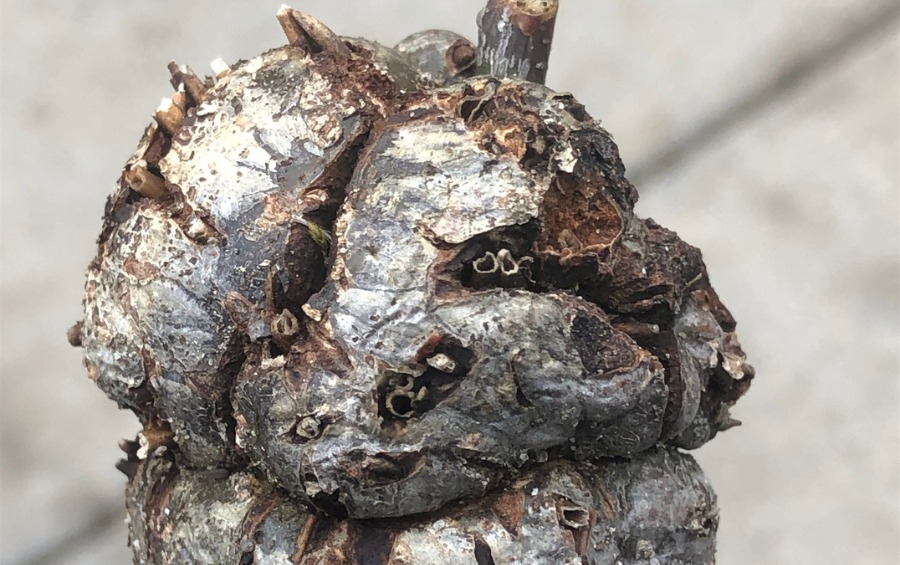
How Horned Oak Gall Forms
It all starts in early spring (typically around April), when minuscule gall wasps emerge from mature galls that have formed on your oak tree’s branches. After emerging, female wasps lay their eggs on the underside of new leaf buds.
As the eggs develop, they cause small blister-like galls on the leaves – something most homeowners don’t even notice. But by late May or early June, the adult wasps emerge from those leaf galls, mate, and move on to the next phase of their life cycle.
The real problem begins when fertilized females insert their eggs into young twigs, triggering the formation of the woody, horned oak galls you eventually see. These galls grow slowly over the next two to three years, eventually reaching up to two inches in diameter.
Each gall can house over 100 wasps. When it’s fully mature, those horn-like projections serve as exit tunnels for the next generation to emerge – and the cycle starts all over again.
From egg to exit, the process takes about 33 months. So, by the time you notice a gall, it’s been developing for years, and your tree may already be dealing with the effects.
Oak Trees Most at Risk of Horned Oak Gall
Horned oak gall is primarily a problem for the pin oaks of the Midwest, as they are most likely to develop on them. However, they can also appear on other oaks, such as:
- Scrub
- Blackjack
- Water
- Red
- Scarlet
How Do I Get Rid of Oak Galls?
As horned oak gall is not a fatal problem for your trees, you typically do not need chemical controls to protect your oaks. Instead, we recommend keeping oaks generally vigorous and healthy with proper tree care.
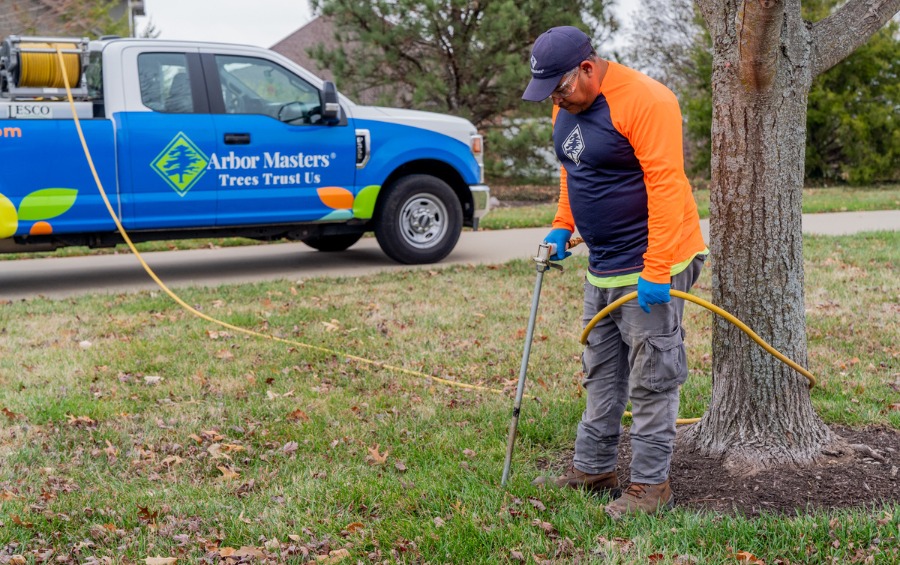
How to Treat Horned Oak Gall
Not every oak tree with galls needs treatment. If the infestation is light and the rest of the tree is healthy, there’s usually no long-term harm. In fact, beneficial insects often help keep gall wasp populations in check without you needing to do a thing.
But if you’re starting to see galls in multiple spots or if the problem seems to be getting worse year after year, it’s worth taking action. The most effective approach is pruning out affected branches as soon as the galls start forming. Just make sure to properly dispose of the debris so you’re not giving the next generation of wasps a place to develop.
For more serious infestations, chemical treatments do exist, but they’re tricky. The University of Missouri has studied a few experimental options, but most only work if time exactly right – and even then, results can vary. These treatments are usually only considered when galls are widespread throughout the canopy.
If you’re not sure how bad things are or whether pruning is enough, it’s a good idea to contact your local Certified Arborist.
How to Prevent Horned Oak Gall
Trees can better resist insect attacks when they are healthy and stress-free. Some of the ways we recommend keeping your tree unstressed and resistant to colonization from gall wasps include:
- Fertilizing Your Trees: Giving your trees the right nutrients helps them grow strong and healthy, and that extra boost can make it easier for them to fight off pests like gall wasps. We recommend waiting until fall for best results.
- Watering Your Trees During Heat and Drought: Heat and drought can cause extensive stress to your trees. While you might not be able to control the weather to make conditions more favorable, you can provide supplemental water when nature isn’t giving them adequate hydration.
- Adding Mulch: A layer of mulch around your trees does more than just look nice, it also helps keep the soil cool, reduces compaction, and adds nutrients as it breaks down. Aim for a 2–4-inch layer to help your trees stay healthy and stress-free.
- Avoiding Injuries to the Roots and Trunk: Many homeowners accidentally harm their trees by damaging them with a lawn mower or string trimmer. These wounds can be an entry point for diseases or pests. They also cause stress for your tree as it has to expend energy to compartmentalize the damage. Always use caution when working around trees to avoid damaging them.
Frequently Asked Questions About Horned Oak Gall
We know seeing spikey balls on your tree can be a bit worrying for most homeowners. To help ease your concerns, we’ve answered some common questions about galls.
Do oak gall wasps sting humans?
No, oak gall wasps do not sting humans and aren’t aggressive. They’re tiny, harmless to humans, and more interested in your tree’s twigs than you. While the galls they create can be unsightly and stressful for the tree, the wasps themselves won’t bite, sting, or pose any risk to people or pets.
Should I prune horned oak galls?
Yes, you should prune horned oak galls, especially if you catch them early. Pruning is one of the most effective ways to control horned oak gall before it spreads. Remove and destroy any affected branches to break the wasps’ life cycle. Just be sure to dispose of the debris – don’t leave it near your trees or compost it.
Is horned oak gall the only issue I should be concerned about on my trees?
No, it’s just one of several common threats to Midwest trees. Here are a few others to keep on your radar:
- Root rot
- Powdery mildew
- Anthracnose
- Webworms
- Wood-boring beetles
- Dutch elm disease
- Emerald ash borer
- Bagworms
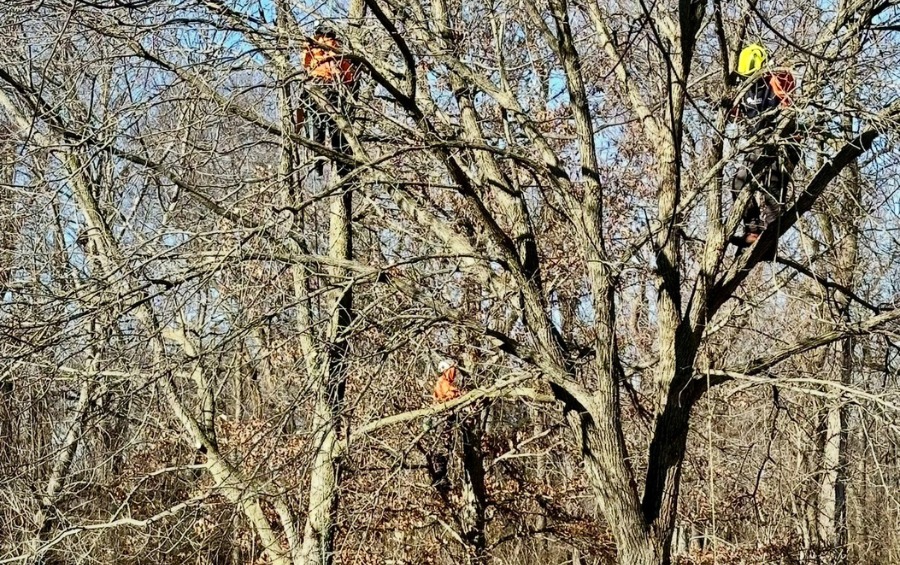
Get Ahead of Horned Oak Gall with Expert Pruning from Arbor Masters
While horned oak gall won’t kill your tree, it will cause aesthetic damage and cause stress. Targeted pruning can help remove these galls and protect your oaks from further damage. And when you need the best possible care for your oak, trust the team at Arbor Masters to help.
We can examine your oaks, determine where the galls are forming, and safely prune the affected areas using industry best practices that protect your tree’s long-term health. Call us today at 316-838-3111 or request a quote online to get expert help with horned oak gall and any other issues affecting your trees.

Get the latest local news, tree care tips, special offers, and company updates directly to your inbox! It's easy to subscribe and there's no spam - we promise.
"*" indicates required fields



